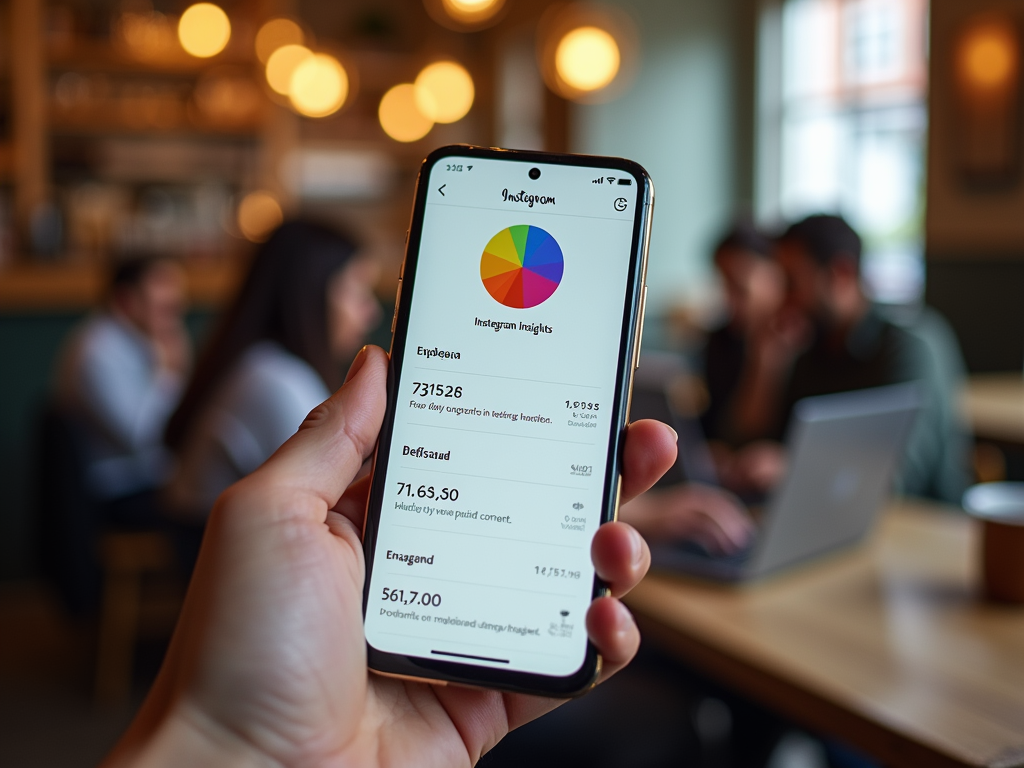In the ever-evolving world of social media marketing, understanding your audience and their engagement behaviors is essential for crafting a successful content strategy. Instagram analytics offer invaluable insights that can help businesses refine their content, boost engagement, and ultimately drive conversions. By leveraging the data collected from your Instagram posts and stories, you can create targeted content that resonates with your audience and meets their needs.
Understanding Instagram Analytics

Instagram offers a robust analytics platform known as Instagram Insights, which provides detailed information about your followers and how they interact with your content. This tool is accessible to all business accounts and includes metrics such as reach, impressions, engagement, and demographic information about your audience. Understanding these metrics is crucial as they allow you to identify what type of content performs best and how your audience responds to different posts.
The main metrics you should focus on include:
- Engagement Rate: This is the percentage of interactions (likes, comments, shares) compared to the number of followers. A higher engagement rate indicates content that resonates well with your audience.
- Reach: This metric shows the number of unique users who saw your post. It helps you understand how widely your content is being circulated.
- Impressions: Unlike reach, impressions refer to the total number of times your post was displayed, including multiple views by the same users.
- Follower Demographics: Knowing the age, gender, and location of your followers can help you tailor your content to better suit their interests.
Using Data to Identify Content Gaps

Analyzing your Instagram analytics can help you identify content gaps, or areas where your audience expresses interest but you’re not currently providing sufficient content. This analysis involves looking at the performance of your past posts, assessing engagement rates across different content types, and determining which themes or topics resonated most with your followers. Once you have this data, you can strategize on filling those gaps with new content that aligns with your audience’s interests.
Consider the following steps:
- Review your best-performing posts and identify common elements (e.g., topics, formats).
- Analyze posts that underperformed and assess if certain topics need re-evaluation.
- Survey your audience through polls or questions in your stories to gather direct feedback.
- Experiment with new content trends while keeping a close eye on resulting data.
Improving Posting Strategies with Analytics
Not only can analytics inform the content you create, but they can also optimize how and when you post. By analyzing the days of the week and times of day when your audience is most active, you can schedule your posts for maximum visibility and engagement. Instagram Insights provides information on when your followers are online, which is an invaluable metric for refining your publishing strategy.
To enhance your posting strategies, take into consideration:
- Posting at times when your audience is most active.
- Utilizing Instagram Stories and IGTV to reach your audience in different formats.
- Maintaining consistency in your posting schedule to keep followers engaged.
- Testing different types of content (e.g., photos, videos, carousels) to see what garners more interaction.
Engaging with Your Audience
Another key aspect of using Instagram analytics is engaging more effectively with your audience. Data can reveal the type of content that sparks conversations, and by responding to comments or direct messages, you can build a strong community around your brand. Plus, leveraging UGC (User-Generated Content) can enhance engagement, as sharing posts from followers can foster a sense of connection and appreciation.
Some effective strategies for audience engagement include:
- Hosting Q&A sessions through Instagram Live or Stories.
- Encouraging followers to share their experiences through comments and tagging your brand.
- Creating interactive content such as polls or quizzes in your stories.
- Showcasing testimonials and stories from customers or followers.
Итог
Leveraging Instagram analytics is not just about tracking numbers – it’s about understanding your audience and refining your content strategy accordingly. By closely monitoring engagement rates, reach, and follower demographics, you can create targeted content that drives results. Incorporating the insights gained from your analytics into your content planning, posting habits, and audience engagement tactics can greatly enhance your overall marketing strategy on Instagram.
Часто задаваемые вопросы
1. How do I access Instagram analytics?
You can access Instagram analytics through the Instagram app by switching to a business or creator account. Once set up, tap on the Insights button on your profile to view your analytics.
2. What is a good engagement rate on Instagram?
A good engagement rate on Instagram typically ranges between 1% to 3% for most accounts. However, engagement can vary based on your industry and audience size.
3. Can I use Instagram analytics to improve my ads?
Yes, analyzing your organic post performance can provide insights that help inform your advertising strategy, including which types of content perform best and when your audience is most active.
4. How often should I check my Instagram analytics?
It’s advisable to review your Instagram analytics at least once a week to stay updated on your performance and adjust your strategy as needed.
5. What should I focus on for content improvement?
Focus on engagement rates, understanding what themes resonate most with your audience, and identifying the best times and formats to post based on your analytics.
